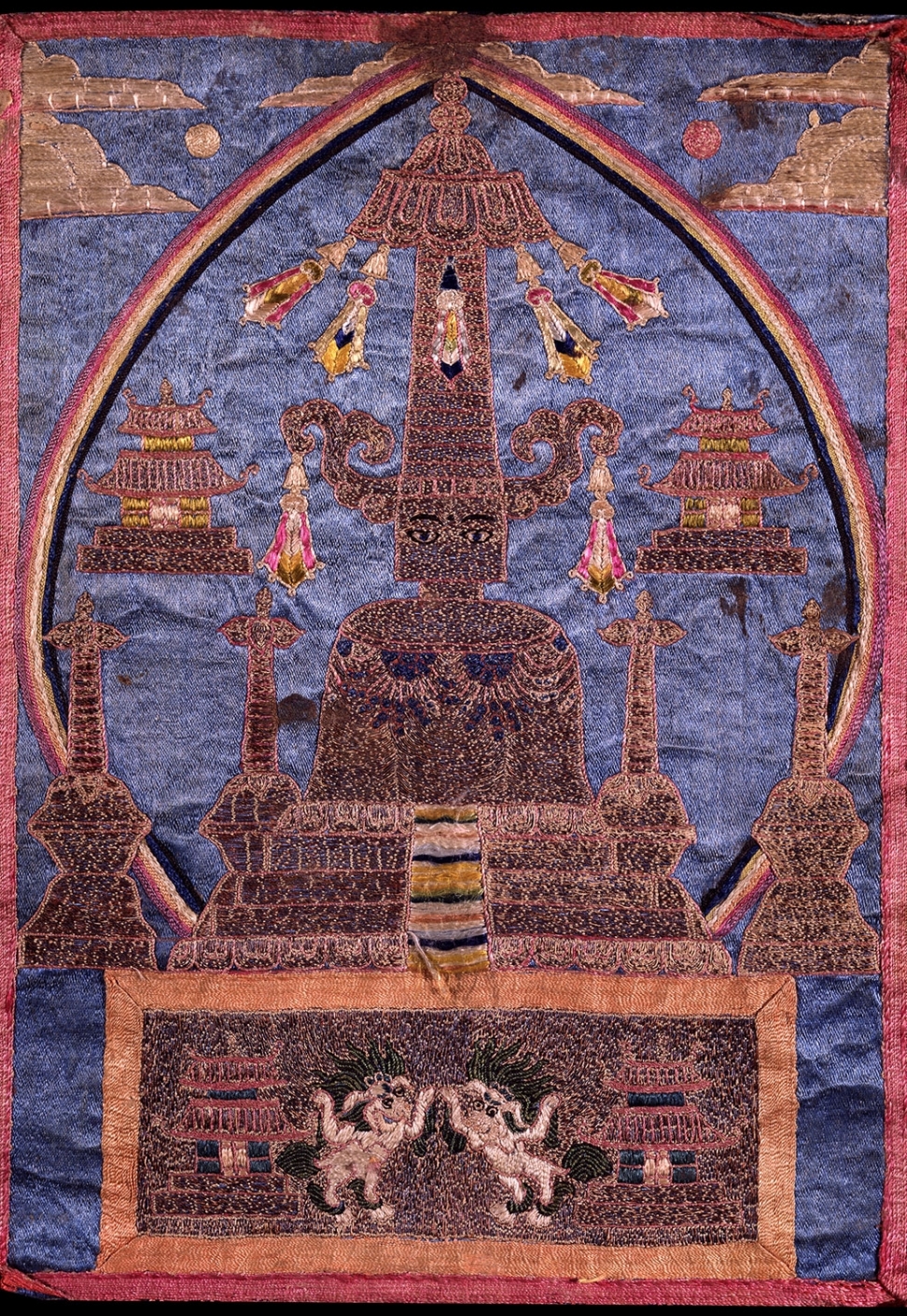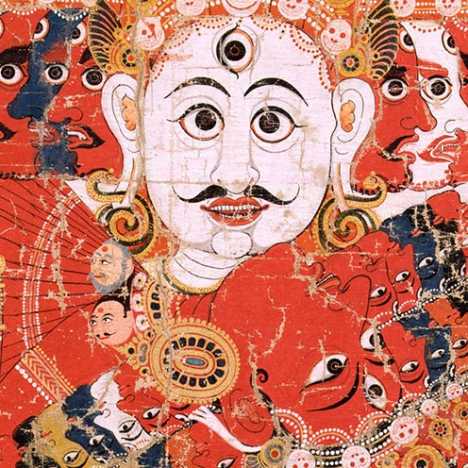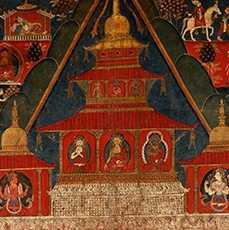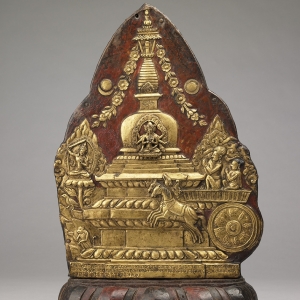
This image shows a stupa located in Kathmandu, Nepal. A stupa is a Buddhist symbol derived from earthen mounds that housed relics of the Buddha. Stupas later became associated with dharmakaya, or the Truth Body of the Buddha, and its tantric personifications. This example comes from Buryatia, a region in eastern Russia near Mongolia. Buryat people practice Tibetan Buddhism and, like Tibetans, travel to India and Nepal as pilgrims.
A Tibetan inscription on the back references the Baudhanath stupa in Kathmandu, which was rediscovered and renovated by Tibetans in the fifteenth and sixteenth centuries and became a famous site in Nepal for Tibetan Buddhists. However, the artist has added a long flight of stairs to the stupa face, a distinctive feature of Swayambunath, another stupa in Kathmandu. Images of buildings with two roofs found in the background and on the throne refer to the traditional architecture of Nepal. This could be a generic representation of a Nepalese stupa.
Label copy for “What is it? Himalayan Art” (June 2007, Nov 2007)
H 8 7/8 x W 6 1/2 in.
C2006.66.33, HAR1087
- https://dev.rubinmuseum.org/images/content/2447/c2006.66.33har1087_master__zoom.jpg
- https://dev.rubinmuseum.org/images/content/2447/c2006.66.33har1087_master__zoom.jpg




